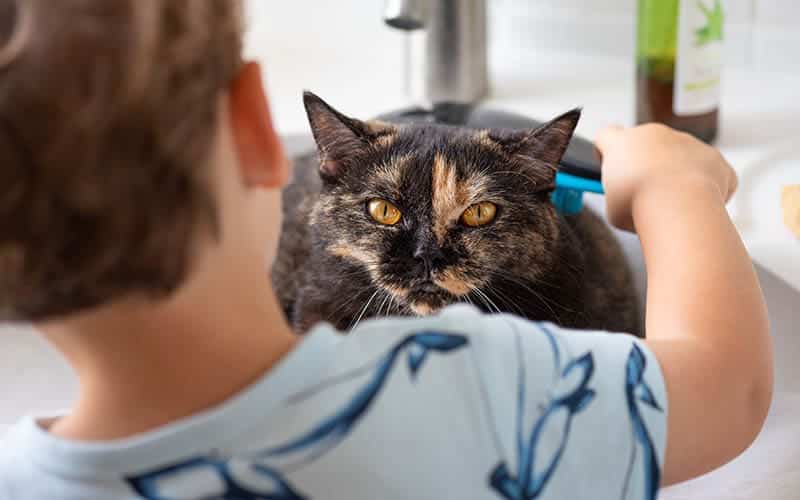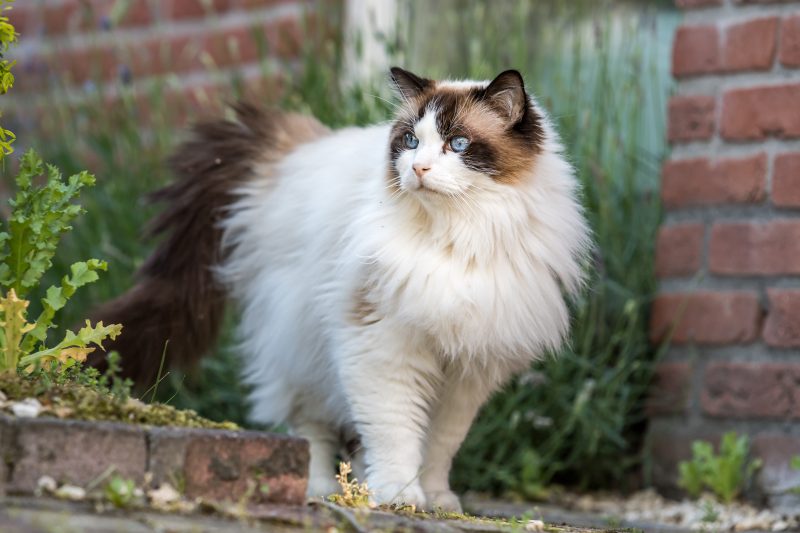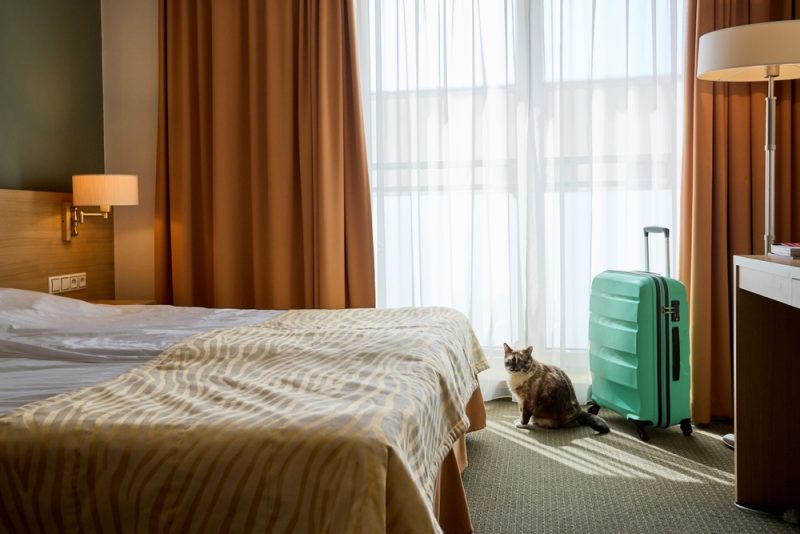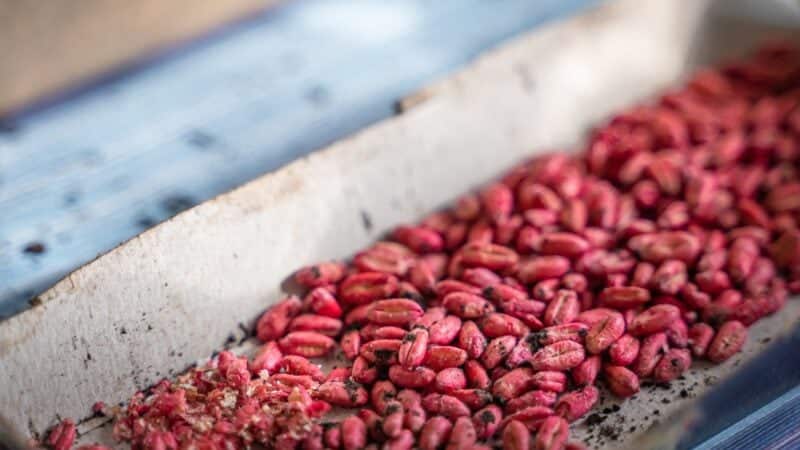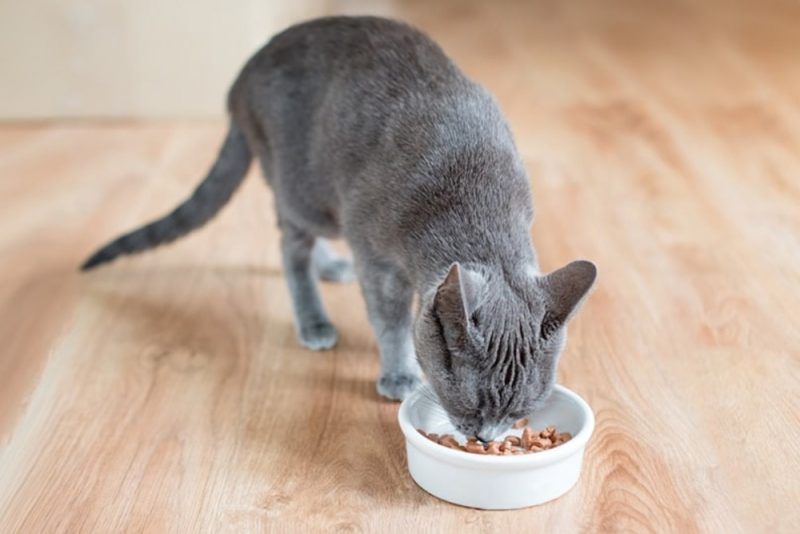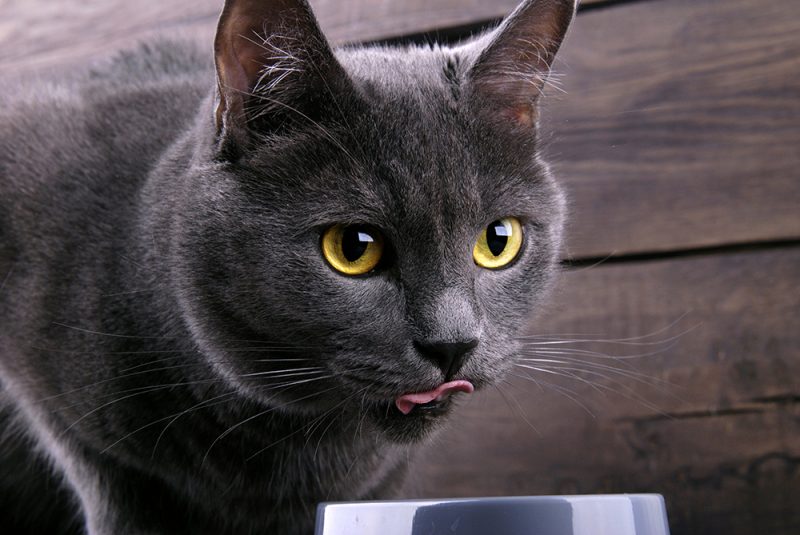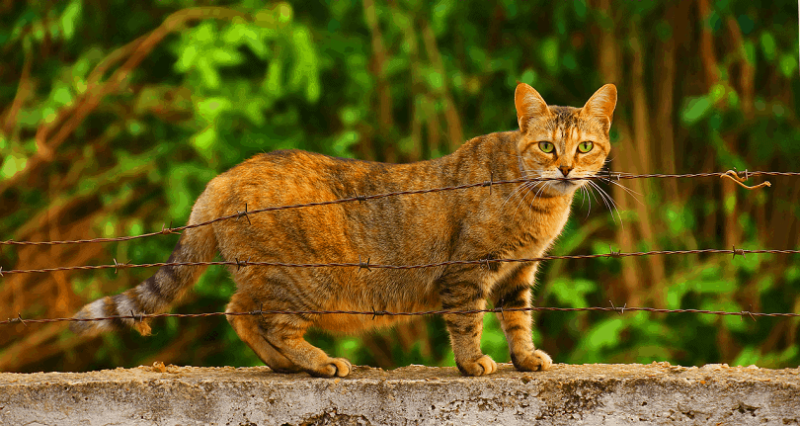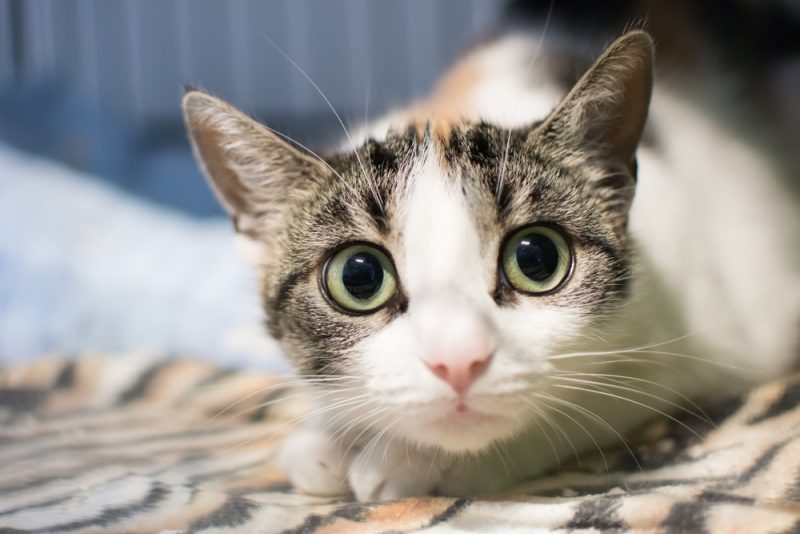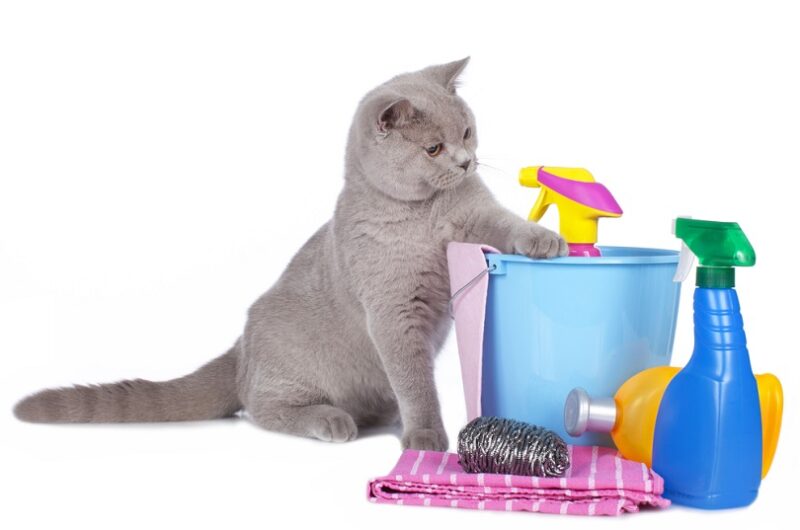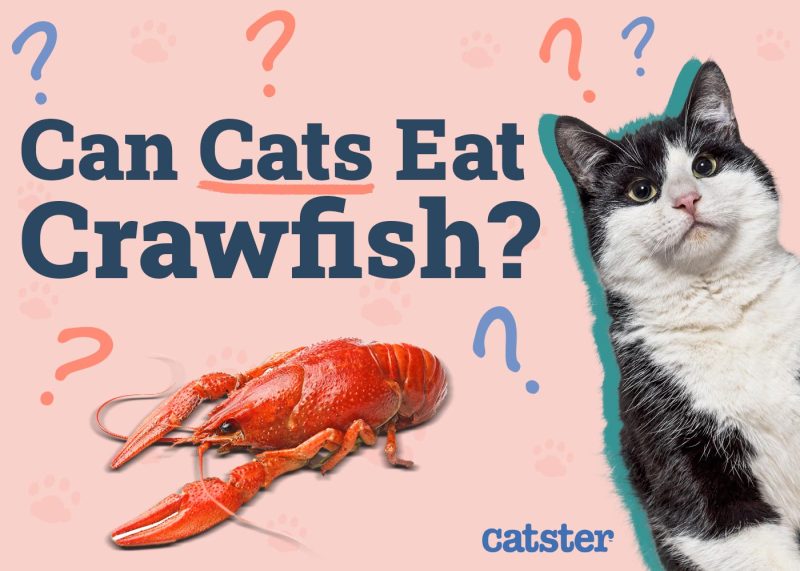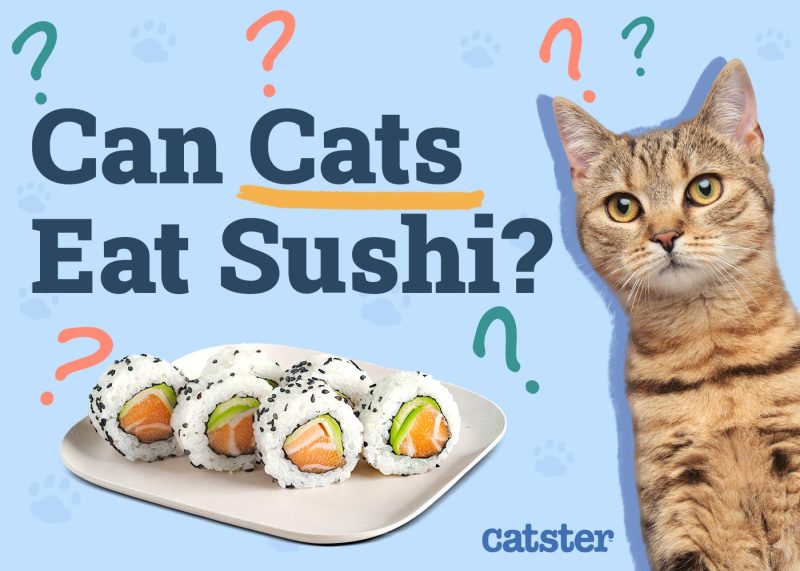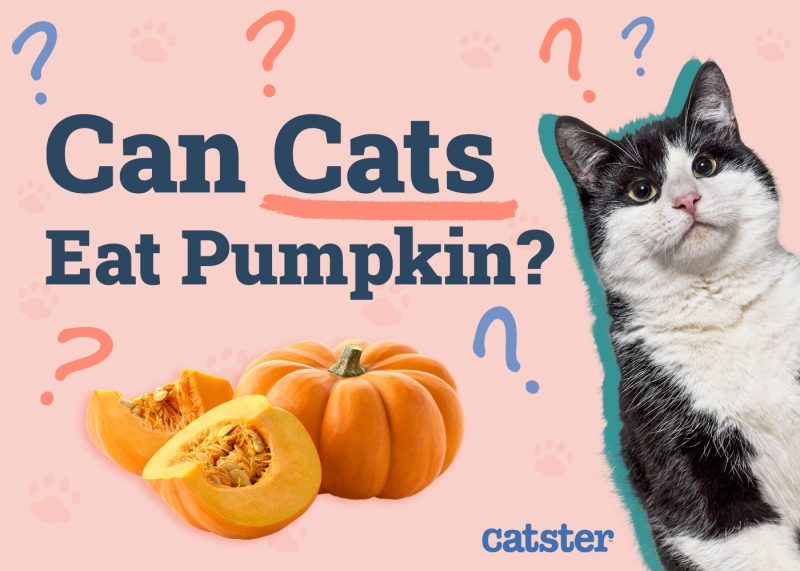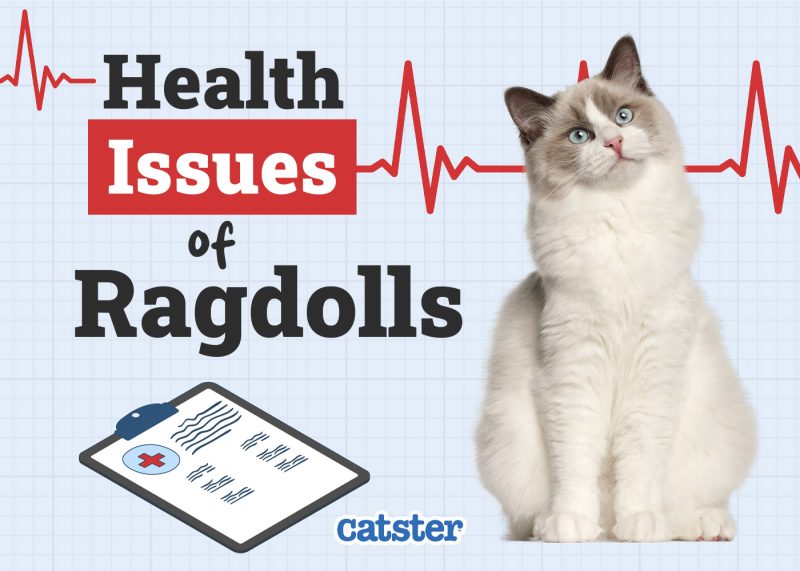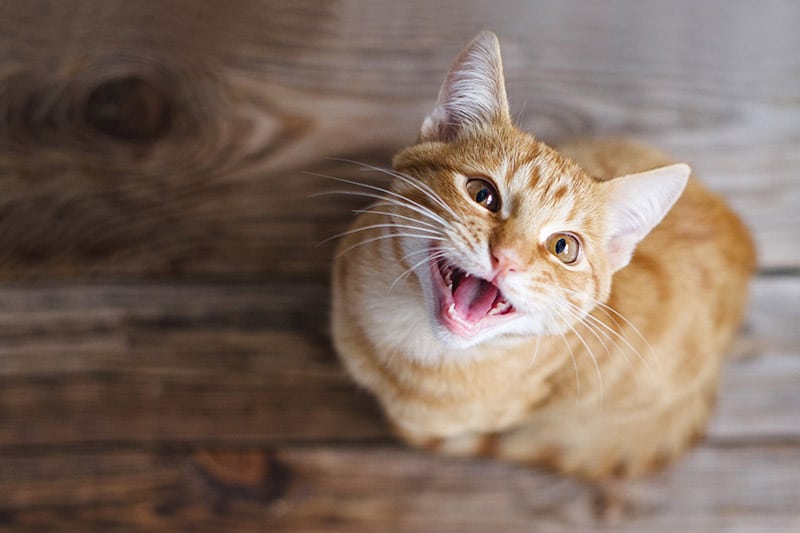In this article
View 6 More +The Tortoiseshell Munchkin cat is a unique and beautiful breed. While their short legs may make them appear dainty, these cats are actually quite hearty and full of personality. Note that tortoiseshell refers to a cat’s coat pattern, which is usually tricolor, and cats of almost any breed can have it. But if you’re considering adding a Tortoiseshell Munchkin to your family, read on to learn more about this special breed.
Breed Overview
Height:
6–9 inches
Weight:
6–9 pounds
Lifespan:
12–15 years
Colors:
Various coat colors and patterns
Suitable for:
Families with pets, families with older children, social lifestyles
Temperament:
Curious, friendly, intelligent, playful
Tortoiseshell Munchkin Cat Characteristics

The Earliest Records of the Munchkin Cat in History
The Munchkin cat breed was believed to have been the result of a natural genetic mutation that gave them their characteristic short legs. According to The International Cat Association (TICA), the first short-legged cats were described by a British veterinarian in a 1944 report, with the only difference between these cats and normal cats was their short legs, but the line of cats described in this report ended in WWII.
Other short-legged cats were discovered in Stalingrad in 1956 and New England in 1970. But the Munchkin breed as we know it today originated in Louisiana in 1983 when a woman named Sandra Hockenedel found a pregnant short-legged cat.
She named the cat Blackberry and gave one of the male cats from Blackberry’s litter to her friend. These two cats were bred with normal domestic cats in order to diversify the gene pool. Blackberry and one of her kittens were the foundation for all Munchkin cats today.
Formal Recognition of Munchkin Cats
After almost 10 years of studying the cats’ pedigrees for consistency, genetics, and health, the Munchkin cat was officially recognized by the International Cat Association (TICA) in 2003. But many other organizations, including the Cat Fanciers’ Association, don’t recognize the Munchkin breed because of ethical concerns that come about from intentionally breeding Munchkin cats.
Characteristics of the Tortoiseshell Munchkin Cat
- Size — These cats are typically 9 to 12 inches long and 4 to 6 pounds in weight.
- Head — The head is medium in size and is slightly rounded with a short, blunt muzzle. The eyes are large and wide-set. The ears are medium in size and are set high on the head.
- Body — The body is medium in length and is muscular with short legs.
- Coat — The coat can be of any length and is dense and soft.
- Pattern — The tortoiseshell pattern is created by patches of black and orange fur. Depending on who you ask, these cats may also have white markings on their chest, belly, and paws.
- Temperament — Munchkin cats are typically active and playful. They are also known for being loving and affectionate with their family and friends.
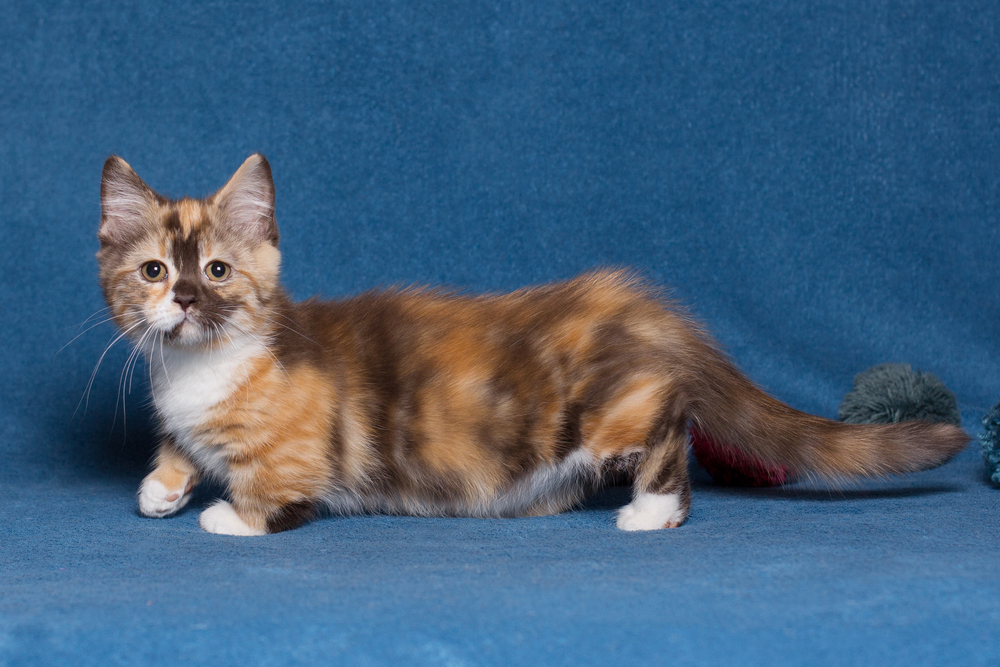
How Tortoiseshell Munchkin Cats Gained Popularity
The Munchkin cat gained popularity when they were introduced to the public in 1991 in Madison Square Garden. People loved their short stature and unique appearance. It is likely that tortoiseshell Munchkins are popular due to their coloring combined with their short stature, making them even more unique.
The Munchkin cat was accepted into TICA’s new breed development program in 1994.

Top 4 Unique Facts About Tortoiseshell Munchkin Cats
1. Tortoiseshell Munchkin cats are mostly female.
Tortoiseshell cats have fur that is a mixture of orange and black patches. Just as in the case of calicos, tortoiseshells are nearly always female.
2. Munchkin cats are named after their short legs.
The breed’s name was inspired by the Munchkin people in The Wizard of Oz. These cats typically have legs that are one-third to one-half the length of a normal cat’s legs.
3. Tortoiseshell Munchkin cats get their short legs from a genetic mutation.
The original genetic mutation is natural, and the original short-legged cats were accidental. But breeders took advantage of the mutation and started intentionally breeding cats with the mutation to create the Munchkin breed today.
4. Breeding Two Munchkin Cats Together Can Be Fatal for the Kittens
Breeding two cats with the Munchkin mutation can lead to non-viable embryos if they inherit the Munchkin trait from both parents, meaning the kittens will not survive because the Munchkin trait is dominant. Munchkin cats must be bred with a normal cat in order to produce viable and healthy kittens, but even then, not all of the kittens in a litter will have short legs. This is why many cat breed organizations won’t recognize the Munchkin cat, as there is a potential for health concerns when breeding them.
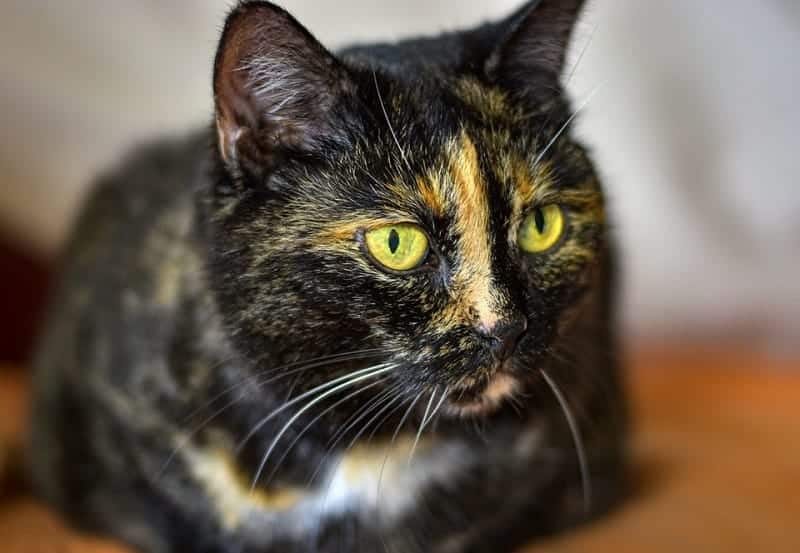

Do Tortoiseshell Munchkin Cats Make a Good Pet?
Tortoiseshell Munchkin cats make excellent pets. They are affectionate, playful, and good with children. These cats do require some special care, however, due to their short legs. Tortoiseshell Munchkin cats should not be allowed to jump or climb too high, as this can cause injuries to their legs.
It is also important to keep an eye on their diet and make sure they get enough exercise. Tortoiseshell Munchkin cats are also susceptible to colds and respiratory infections, so it’s vital to keep them warm during the winter months.
Do Tortoiseshell Munchkin Cats Get Along With Other Pets?
Tortoiseshell Munchkin cats generally get along well with other pets. They are typically loving and affectionate with their family and friends. However, due to their short legs, it’s important to supervise them around other animals, as they may be injured if jumped or stepped on.
Conclusion
The tortoiseshell Munchkin has been capturing the hearts of cat lovers in the U.S. since the 1990s. These unique cats are known for their short legs, loving personalities, and beautiful coats. If you are considering adopting a Tortoiseshell Munchkin cat, be sure to find a reputable breeder who can provide you with a healthy kitten, and you’ll have a new best friend.
See Also:
Featured Image Credit: Tommy Larey, Shutterstock
